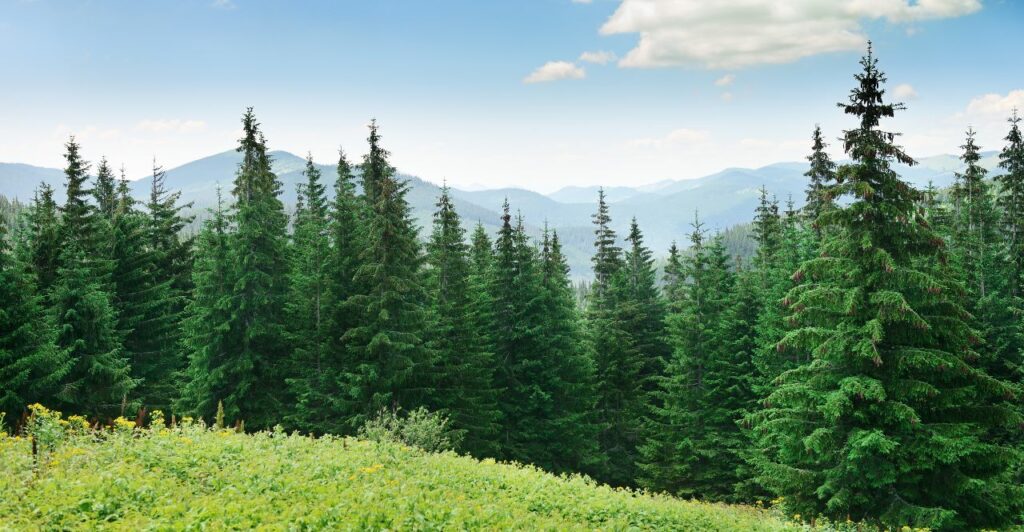Blog
What You Need to Know About Spruce Budworm

Spruce budworm (Choristoneura fumiferana) is a moth species native to North America and can be found in Western Canada. They’re considered the most harmful pest to fir and spruce forests. Here’s what you need to know about these insects.
Spruce Budworm Appearance
Spruce budworm larvae are 18 to 24 millimetres long and cylindrical in shape. They have black heads and greenish-brown bodies. Adult budworm moths are usually dull grey with bands and brown spots. They have a wingspan of about 20 millimetres.
Lifecycle of a Spruce Budworm
In late July or early August, female budworm moths lay eggs in clusters of 10 to 150 on the needles of host trees. The larvae hatch in about 10 days and move toward the tree’s crown, where they build silken shelters to hibernate during winter. The larvae emerge in May and start feeding on the tree’s new foliage. Pupation occurs by mid-July, and the cycle begins again.
Spruce budworm population cycles are characterized by epidemic and endemic phases, and outbreaks occur every 30 to 40 years. During an outbreak, tens of millions of hectares of trees can be severely defoliated.
Spruce Budworm Damage
Spruce budworm damage first appears in May when the larvae begin to feed. The first sign of an infestation is large numbers of larvae suspended from strands of silk. Moreover, defoliation becomes visually noticeable in late June when the larvae have completed most of their feeding. Defoliation begins at the top of the tree and quickly progresses downwards.
A single year of defoliation can weaken the tree, making it more susceptible to other pests and diseases. However, defoliation over several consecutive years can kill it. For example, fir trees can die after four to five years of severe defoliation.
Spruce Budworm Treatment
Mild budworm infestations are generally kept in check by disease, birds, insects and predators. Additionally, weather events like late spring frosts and cool, wet summers can also help reduce spruce budworm numbers.
At ArborCare, we can effectively control spruce budworm populations at your home or business with back-to-back applications of Trounce. Trounce is a natural, organic pesticide that’s safe for the environment because it breaks down and doesn’t persist or cause residual effects. We apply Trounce two weeks apart in early May.
Spruce Budworm Control and Management in Western Canada
If you have a spruce budworm infestation on your property, the experienced arborists at ArborCare can help. We use an organic spruce budworm treatment to ensure pests are eliminated and won’t return. We also offer tree removal and plant management services for customers in Calgary, Edmonton, Winnipeg and Kelowna. If you want to learn more about our services, contact us today.
 1-877-444-8733
1-877-444-8733